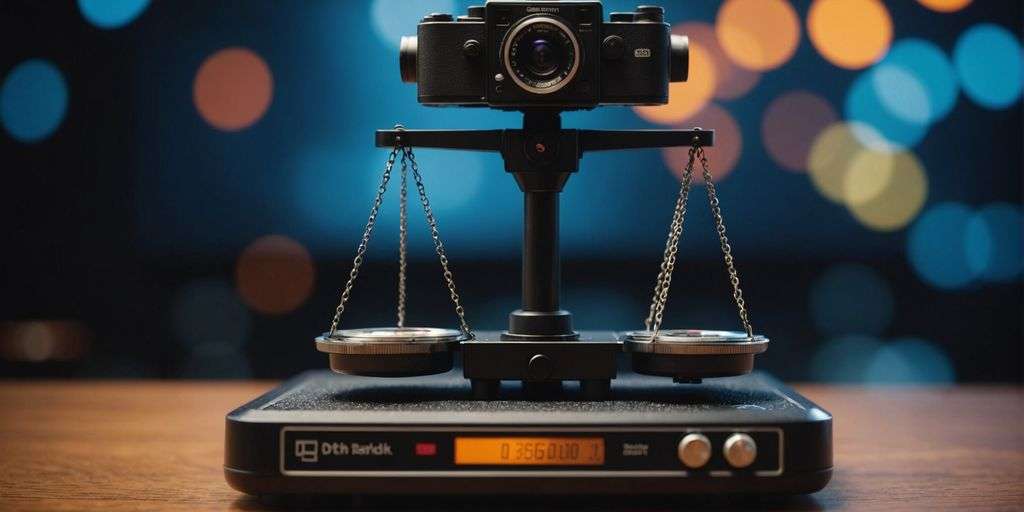Understanding Camera Resolution
Pixels and Image Quality
Resolution is all about the number of pixels in an image. More pixels mean a clearer and more detailed picture. However, this also means larger file sizes. Higher resolution equals better image quality but requires more storage.
Impact on Storage Space
High-resolution cameras create large data files because they capture many pixels in each frame. These large files need more storage space. It’s a balancing act between having clear images and managing storage capacity.
Balancing Clarity and Capacity
Finding the right resolution is about balancing image clarity and storage needs. You don’t always need the highest resolution. Sometimes, a lower resolution can be enough, especially if storage space is limited.
Remember, resolution is just one part of the equation. Factors like frame rate, camera placement, and lighting also play a role in the overall quality of your footage.
Choosing the Right Resolution for Your Needs
General Surveillance
When selecting a resolution for general surveillance, consider the size of the area being monitored and the level of detail required. For most purposes, a resolution of 1080p is sufficient, providing a good balance between image clarity and storage needs. Higher resolutions like 4K offer more detail but will consume more storage space.
Specialised Applications
In specialised applications, such as facial recognition or licence plate reading, higher resolutions are often necessary. These tasks require greater detail to be effective. However, it’s important to ensure that your storage solutions can handle the increased file sizes that come with higher resolutions.
Cost Considerations
Cost is a significant factor when choosing the right resolution. Higher resolution cameras and the storage solutions to support them can be expensive. It’s essential to weigh the benefits of higher resolution against the additional costs. Sometimes, a lower resolution may be more practical and cost-effective for your needs.
Finding the best resolution for your needs involves balancing clarity, storage capacity, and cost. Aim for a resolution that meets your requirements without overburdening your storage system or budget.
Striking the Balance: Minimalism vs. Hoarding

Benefits of Minimalism
Minimalism is about living with less and focusing on what truly matters. It helps reduce clutter, making your space more organised and easier to manage. Living with fewer items can also reduce stress and create a more peaceful environment. Additionally, minimalism encourages mindful consumption, which can save money and reduce waste.
Drawbacks of Hoarding
Hoarding, on the other hand, involves keeping too many possessions, often leading to clutter and disorganisation. This can make it difficult to find things when you need them and can create a stressful living environment. Hoarding can also lead to wasted money and space, as well as potential health hazards from accumulated dust and debris.
Finding Your Sweet Spot
Finding a balance between minimalism and hoarding is key to a comfortable and fulfilling lifestyle. Start by evaluating your priorities and what truly matters to you. Consider the size of your living space and be selective about what you keep. Remember, it’s about finding a balance that works for you, even if it’s not perfect. Embrace the journey and make adjustments as needed to find your sweet spot.
Practical Tips for Managing Storage
Efficient Storage Solutions
To make the most of your storage, consider using efficient solutions. Maximising the range of your storage options can help you save space and money. Look into cloud storage, which offers flexibility and scalability. Additionally, network-attached storage (NAS) devices can provide a centralised location for all your data.
Regular Maintenance
Regular maintenance is key to ensuring your storage systems run smoothly. Schedule routine checks to delete unnecessary files and organise your data. This not only helps in freeing up space but also improves system performance.
Future-Proofing Your System
When planning your storage needs, think ahead. Invest in scalable solutions that can grow with your needs. This tailored approach ensures that you won’t outgrow your storage too quickly, saving you time and money in the long run.
Efficient storage management is not just about having enough space; it’s about using that space wisely and planning for the future.
Conclusion
Finding the right balance between resolution and storage needs is like walking a tightrope. Too much focus on high resolution can lead to storage headaches, while too little can compromise the clarity you need. By understanding your specific requirements and considering factors like context and operating expenses, you can find that sweet spot where everything aligns perfectly. Remember, it’s not always about having the best of everything, but rather what works best for you. Keep these tips in mind, and you’ll be well on your way to making smart, efficient choices.
Frequently Asked Questions
Why is balancing resolution and storage important for security cameras?
Finding the right balance between resolution and storage is crucial because higher resolution means clearer images but also larger file sizes, which require more storage space. Balancing these factors helps in achieving the best video quality without overwhelming storage capacities.
Do I always need the highest resolution for my security camera?
Not necessarily. The highest resolution isn’t always required for every situation. For general surveillance, a moderate resolution might be sufficient, whereas specialised applications may need higher resolutions for more detail.
What are some tips for managing storage effectively?
To manage storage effectively, consider using efficient storage solutions like cloud storage or network-attached storage (NAS). Regular maintenance, such as deleting old files, and planning for future storage needs can also help in managing storage efficiently.





